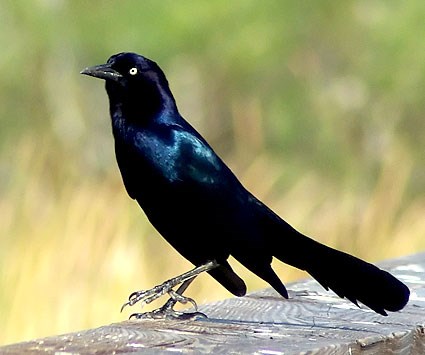 |
| The fantastically well preserved fossil of the 120 million year old Microraptor used in the study |
Yet it is still unclear as to exactly what they were used for. As they were cold blooded they would have used the sun to warm their bodies rather than feathers to stay warm. Some small bird-like dinosaurs may have used them to aid flight. This does not explain, however, why large ground dwelling predators such as Velociraptor had them. The only other explanation is that they were used in mating rituals.
Now an international team of palaeontologists believe that they ave found evidence to support this theory. Their research was centered around a fossil of a pigeon-sized, 120 million year old Microraptor. This dinosaur possessed elaborate plumage and body feathers. A study of the colours has shown that they would have been very useful in mating rituals to lure females.
In 2011, a university student called Jacob Vinther discovered a way to accurately reconstruct the colours of extinct organisms, working out that a close relative of Microraptor, called Anchiornis, had a black body with a white plumage. Using the same technique, which involves analysis of fossilized cellular structures called melanosomes, the team recreated the colours of the feathers by looking at the different proteins within the melanosomes which determine them.
 |
| The glossiness of the feathers in modern birds may have evolved from Microraptor |
What makes the discovery even more interesting is that it is the oldest recorded instance of glossiness in the fossil record. Many younger dinosaurs such as Velociraptor and Anchiornis as well as their only living descendants, the birds, also have glossy feathers. This suggests that all these non-avian dinosaurs and the true birds are descendants of Microraptor. While the first bird was discovered in Germany, its close descendants, such as Confuciusornis, have also been discovered in China at the same fossil formations as Microraptor.
'Modern birds use their feathers for many different things, ranging from flight to thermoregulation to mate-attracting displays,' said Matt Shawkey, a co-author and associate professor of biology at the University of Akron. 'Iridescence is widespread in modern birds and is frequently used in displays. Our evidence that Microraptor was largely iridescent thus suggests that feathers were important for display even relatively early in their evolution.'